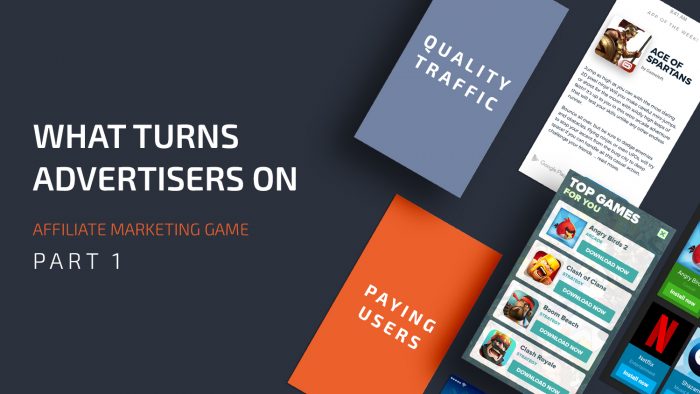4 Reasons Why Advertisers Are Capping Your Mobile Campaigns
Last updated on May 7, 2018 by Maria Carvalho 5 min readTable of Contents
ToggleIntroduction
Capping.
This word doesn’t have one singular, single meaning in the affiliate marketing business.
Indeed, when media buyers read this word, their mind automatically flies to this definition:
Capping is the number of views a specific IP user will see your ads within a specific period e.g. if I set a capping of 2/24h, users won’t see my banner more than two times for every 24 hours.
This is one of the Definitions of Capping you should get to know!
However, this article will focus on the other:
The one that’s chosen by the advertisers.
This isn’t a cap for the number of times an ad is displayed but a cap for the number of conversions a campaign can have.
When applying for an offer in an affiliate network, you may often find something such as leads: 50.
What does this mean?
Is this capping for you only, or for all the affiliates that are promoting this offer combined?
Are we talking about something that’s per day, per month, per total campaign running time?
How can you know this? Why does this happen?
Why do advertisers choose capping?
Advertisers often let their campaigns run with no limits.
You can send as much traffic as you’d like, delivering an unlimited number of leads.
Nonetheless – like in everything in life – not all advertisers have the same strategy.
Some opt to restrict the number of conversions their campaigns can have.
This can be done for several reasons!
1. Controlling the Number of Leads
Advertisers can use this method to control the number of leads their system is able to register.
When a new company breaks into the mobile advertising ecosystem, they often aren’t 100% familiar with how the industry works.
To test the waters, their budget is usually lower and more controlled.
This can also be due to their recently-created tracking systems. With less time for development, they aren’t usually ready to take on large numbers of conversions.
This is one of the reasons why a cap is sometimes necessary.
2. Controlling their Budget
Are budget restrictions only applicable to market newbies?
Of course not!
Advertisers are companies.
Like any company, they have costs and revenue.
This ain’t no business 101 class, but it’s clear that costs can’t surpass revenue forever!
Paying a commission to affiliate networks is a cost to the advertiser.
The revenue comes from the user who subscribes to the service.
The problem is that the user is paying the carrier.
The carrier will then take 90, 180 or even more days to pay the advertiser.
Meaning what?
That if the advertiser pays the network in, let’s say, 30 days and receives from the carrier in 90 days, this means they’re paying the network in advance.
For some, it can be tricky to always pay in advance.
In fact, they may feel the need to control that amount of money.
That can also lead to daily or monthly lead capping.
3. Monitoring if they’re not Overspending
Advertisers can use capping to monitor if they’re not overspending on a campaign that brings negative ROI.
Wondering what the heck is ROI?
It’s one of those accounting acronyms.
What can this possibly have to do with capping?
It may be the reason why you’re unable to send more users to that top favorite offer of yours.
Yes, indeed!
ROI stands for Return Over Investment.
The advertiser is investing a certain amount of money with the payouts it pays networks.
The advertiser is getting a given return over that investment.
When they start a campaign, they don’t know if the dollars they’re spending on networks will ultimately result in highly-committed users.
Until they have enough data to determine the right amount of cash to spend, they may decide to establish a cap.
4. Testing the Traffic Quality of some Affiliates
Advertisers can also cap when they’re testing the traffic quality of some affiliates before making it available to them all.
When an advertiser is launching a new product, they have no idea how it’ll perform across the different traffic sources.
The fearless ones may decide to run them with no capping.
However, the cautious ones will prefer to impose limits to the number of new users they’ll get.
In fact, they may want to test advertising with a reduced number of affiliates, only later deciding whether or not to make it available to other affiliates.
Here, as previously explained, quality will be your best weapon.
If you’re delivering high-quality leads, you may ask your AM if he can increase the cap for you.
In case he can’t do it, ask what the advertiser would like to see from your traffic.
This way, you can improve the quality of your traffic and be blessed with an increase in daily/monthly leads in the future!
Who’s this capping for?
Is it daily, monthly?
Let’s take a look at this example:
Offer A has a capping of 50 leads/day. You’ve just sent 5 leads today but the offer has ceased to convert.
You check with your account manager and he tells you the daily cap has been reached.
What?!
You’ve just sent 5 out of 50 possible leads.
How’s it possible that the capping has been reached?
The answer you’ll get from your AM is probably that the capping is for the network.
This means that all of the network’s affiliates can deliver a total of 50 leads per day.
You’ve delivered 5.
Other affiliates promoting this offer have delivered 45.
That’s 50.
It’s that easy to get.
The offer can’t convert anymore for the rest of the day. Simple.
Let’s pretend you come across a campaign and notice it has a limited number of leads it can deliver.
Most of the times, you won’t be able to find out whether these leads are to be delivered by you alone or by all affiliates of the network it’s being promoted on.
Before you start promoting, contact your Account Manager.
They’ll give you all the info you need to know in order to prevent surprises like the one showcased in the example above.
Regarding the time frame of the capping: the most common are daily caps and monthly caps.
Imagine the offer has a daily cap of 50 conversions.
When it reaches that value, it’ll stop converting until the next day.
Then, it’ll convert a maximum of 50 times until it stops converting again.
Basically, it’ll convert a maximum of 50 times each day and then stop. Easy.
What about Monthly Capping?
The strategy is the same.
The numbers are usually higher than on daily caps
With a monthly cap of 300, you’ll be able to send 300 conversions to that offer for a month.
Whether you reach that cap in the 1st day of the month or towards the end, you won’t be able to send more leads until the end of the month.
Once the next month starts, you can deliver 300 more leads.
Conclusion
You can find different types of capping across affiliate networks.
Some are capped per user, per day, per platform capping…
In general, networks have algorithms which will dynamically decide these things in real time.
This is how they manage to automatically split the leads across all affiliates.
I hope this article has helped you understand why some offers have a limit of leads you can deliver.
Information isn’t always 100% available when applying to an offer!
If you have any questions, don’t hesitate!
Always contact your Account Manager!
See Also:

Maria Carvalho may be young, but she's not the kind of girl to get fazed by such a minor detail. Passionate, artful and filled with professional knowledge, Maria is the queen bee of the Business Intelligence Team. Analyzing data like a pro is easy for her, and that's why she writes with amazing intelligence and super competent skills. Read her articles in case you don't want to be left behind in affiliate school!
The affiliate marketing game is all about giving advertisers what they want! Learn how it's done and become an advertising expert!
Wondering what mobile affiliate marketing is really all about? Check this super informative post immediately and find out today!
Need to master affiliate marketing and wanna hear an experienced voice in the game? Check a post written by an affiliate marketing pro, then!



